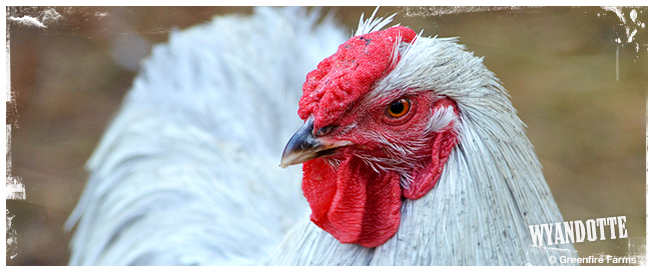No other plumage coloring in the chicken genome is more breathtaking than the smoky, ethereal hue of lavender. These large fowl Wyandottes are stunning examples.
| Item | 1+ | Quantity |
|---|---|---|
| Lavender Wyandotte Unsexed | 59.00 | |
| Split Lavender Wyandotte (expressed as BLACK) Unsexed | 19.00 | |
| Lavender or Split Wyandotte Eggs | 8.00 | Sold Out |
The Wyandottes raised by Greenfire Farms have taken a convoluted route to arrive in your coop: They are American chickens with an Indian name that picked up much of their showy genetics in Europe.
Breed History
Wyandottes first appeared in the United States in the 1870s, the product of chicken breeders in New York and Massachusetts. Scholars debate the mix of breeds that gave rise to the Wyandotte, but the Hamburg likely contributed the neat rose comb that is evident in the breed. The new breed was named after a Northeastern tribe of Native Americans, the Wyandotte Nation. In the 21st Century, a striking color variant was introduced into the Wyandotte gene pool. Allan Brooker, a Briton who spent a decade quietly breeding Wyandottes, was able to create the most convincing lavender chicken we have ever seen, a large fowl Wyandotte. A deep lavender color is apparent even in the chicks of this variety.
Appearance and Behavior
This variety of Wyandotte is a large fowl variety, with roosters typically weighing in between 7 to 8 pounds and the hens between 5 to 6 pounds at maturity. In adults, lavender is set against a bright red, rose comb, red earlobes, red wattles, and yellow non-feathered legs making for a truly striking appearance. The Wyandottes have a lot of under-fluff giving them an almost cartoon-like chicken appearance with very fluffy butts. With all of this fluff and short comb, they do tend to do fairly well in cold temperatures. The hens from this breed will sexually mature around 8 months old, so they are slower to mature than most other breeds. Once mature hens usually lay a good quantity of cream-colored eggs during the first couple of years. As the hens age, they will lay significantly fewer eggs once they are more than 2 years old. The roosters are gentle and sociable, and the hens are equally docile.
To summarize the genetics, the lavender coloration is due to a recessive gene mutation. The lavender gene is responsible for diluting eumelanin and phaeomelanin which are genes that are responsible for black and red or brown, respectively. Since the lavender wyandotte is set against a black background, the lavender gene dilutes the black pigment (eumelanin) resulting in the lavender plumage that we all know and love. For the birds to express lavender they must have 2 copies of the lavender gene.
One drawback of the lavender gene is poor feather quality. Most notably in the tail feathers. The feathers tend to damage easily and some breeders refer to this gene as the "tail shredder" gene. Crossing a lavender bird with a split lavender bird can sometimes help strengthen the quality of the feathers. The split lavender chicks that our farm offers are expressed as BLACK and are capable of producing lavender offspring as they carry one copy of the lavender gene. If you breed a split lavender bird to a lavender bird then 50% of the offspring will be black and 50% will be lavender. At the moment, the APA does not recognize the lavender Wyandotte but does recognize 9 other color varieties.
Breeding
We have found that this breed does well at a rooster-to-hen ratio of about 1:8. The viability does tend to fluctuate throughout the year. We have found that giving vent trims helps increase the rate of successful mating. It also helps clean up around the vent as sometimes their fluff can get very dirty. To give the vent trim, we just use a pair of sharp scissors and carefully cut the fluff around the vent. We have a couple of videos on our social media pages if you'd like to see how we do it.
Hatching Eggs
We incubate at 99.5F and 55% humidity. Typically we see about an 80% hatch rate from the eggs that we place into our hatcher. Thoroughly check every chick's leg for the presence of feathers. As the chicks age you will need to pay special attention to leg color and comb shape. You should expect to make culls as you select the best birds for your breeding program.
Breed History
Wyandottes first appeared in the United States in the 1870s, the product of chicken breeders in New York and Massachusetts. Scholars debate the mix of breeds that gave rise to the Wyandotte, but the Hamburg likely contributed the neat rose comb that is evident in the breed. The new breed was named after a Northeastern tribe of Native Americans, the Wyandotte Nation. In the 21st Century, a striking color variant was introduced into the Wyandotte gene pool. Allan Brooker, a Briton who spent a decade quietly breeding Wyandottes, was able to create the most convincing lavender chicken we have ever seen, a large fowl Wyandotte. A deep lavender color is apparent even in the chicks of this variety.
Appearance and Behavior
This variety of Wyandotte is a large fowl variety, with roosters typically weighing in between 7 to 8 pounds and the hens between 5 to 6 pounds at maturity. In adults, lavender is set against a bright red, rose comb, red earlobes, red wattles, and yellow non-feathered legs making for a truly striking appearance. The Wyandottes have a lot of under-fluff giving them an almost cartoon-like chicken appearance with very fluffy butts. With all of this fluff and short comb, they do tend to do fairly well in cold temperatures. The hens from this breed will sexually mature around 8 months old, so they are slower to mature than most other breeds. Once mature hens usually lay a good quantity of cream-colored eggs during the first couple of years. As the hens age, they will lay significantly fewer eggs once they are more than 2 years old. The roosters are gentle and sociable, and the hens are equally docile.
To summarize the genetics, the lavender coloration is due to a recessive gene mutation. The lavender gene is responsible for diluting eumelanin and phaeomelanin which are genes that are responsible for black and red or brown, respectively. Since the lavender wyandotte is set against a black background, the lavender gene dilutes the black pigment (eumelanin) resulting in the lavender plumage that we all know and love. For the birds to express lavender they must have 2 copies of the lavender gene.
One drawback of the lavender gene is poor feather quality. Most notably in the tail feathers. The feathers tend to damage easily and some breeders refer to this gene as the "tail shredder" gene. Crossing a lavender bird with a split lavender bird can sometimes help strengthen the quality of the feathers. The split lavender chicks that our farm offers are expressed as BLACK and are capable of producing lavender offspring as they carry one copy of the lavender gene. If you breed a split lavender bird to a lavender bird then 50% of the offspring will be black and 50% will be lavender. At the moment, the APA does not recognize the lavender Wyandotte but does recognize 9 other color varieties.
Breeding
We have found that this breed does well at a rooster-to-hen ratio of about 1:8. The viability does tend to fluctuate throughout the year. We have found that giving vent trims helps increase the rate of successful mating. It also helps clean up around the vent as sometimes their fluff can get very dirty. To give the vent trim, we just use a pair of sharp scissors and carefully cut the fluff around the vent. We have a couple of videos on our social media pages if you'd like to see how we do it.
Hatching Eggs
We incubate at 99.5F and 55% humidity. Typically we see about an 80% hatch rate from the eggs that we place into our hatcher. Thoroughly check every chick's leg for the presence of feathers. As the chicks age you will need to pay special attention to leg color and comb shape. You should expect to make culls as you select the best birds for your breeding program.
| Egg Color | tinted |
| Egg Size | Medium |
| Gamefowl | no |
| Table Breeds | Yes |
| Country of Origin | US |
| Cold tolerant | yes |

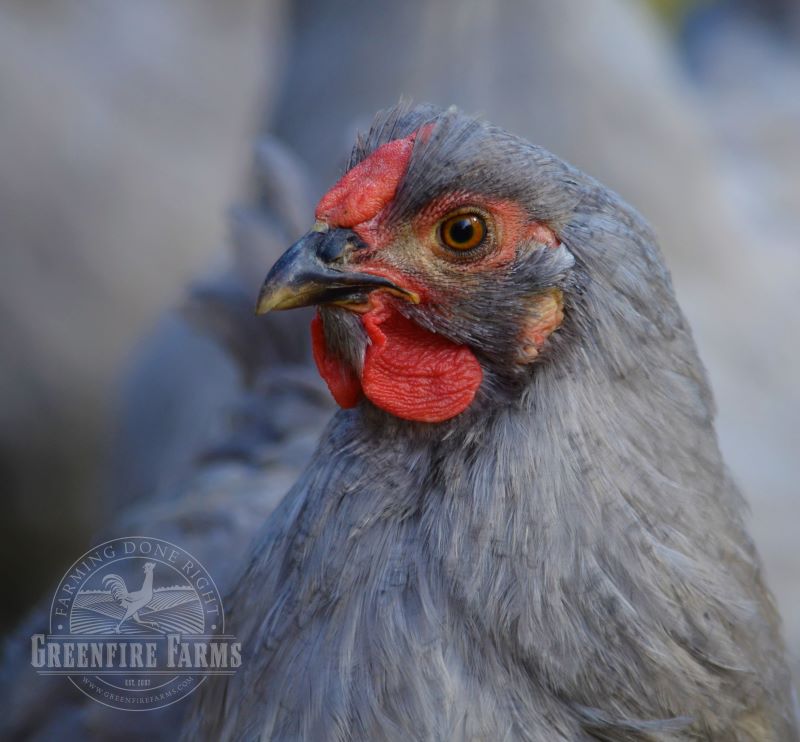
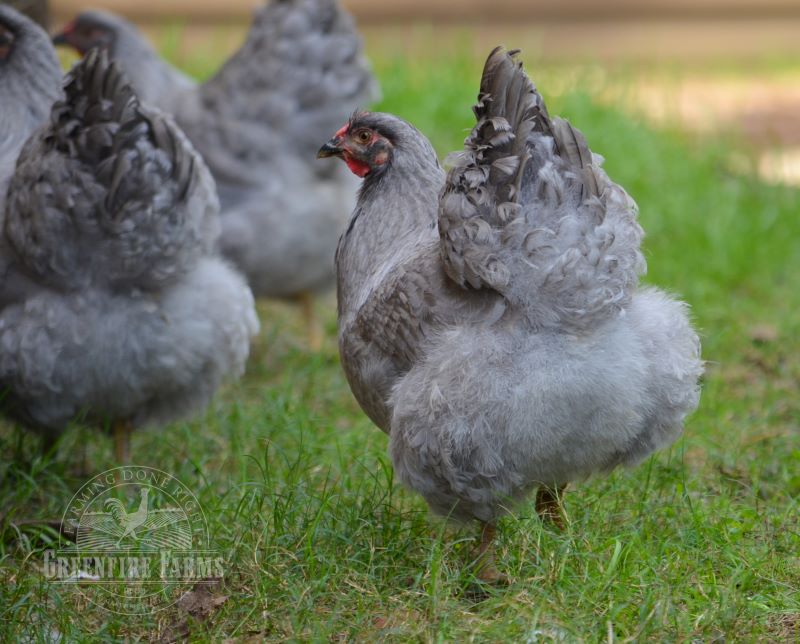

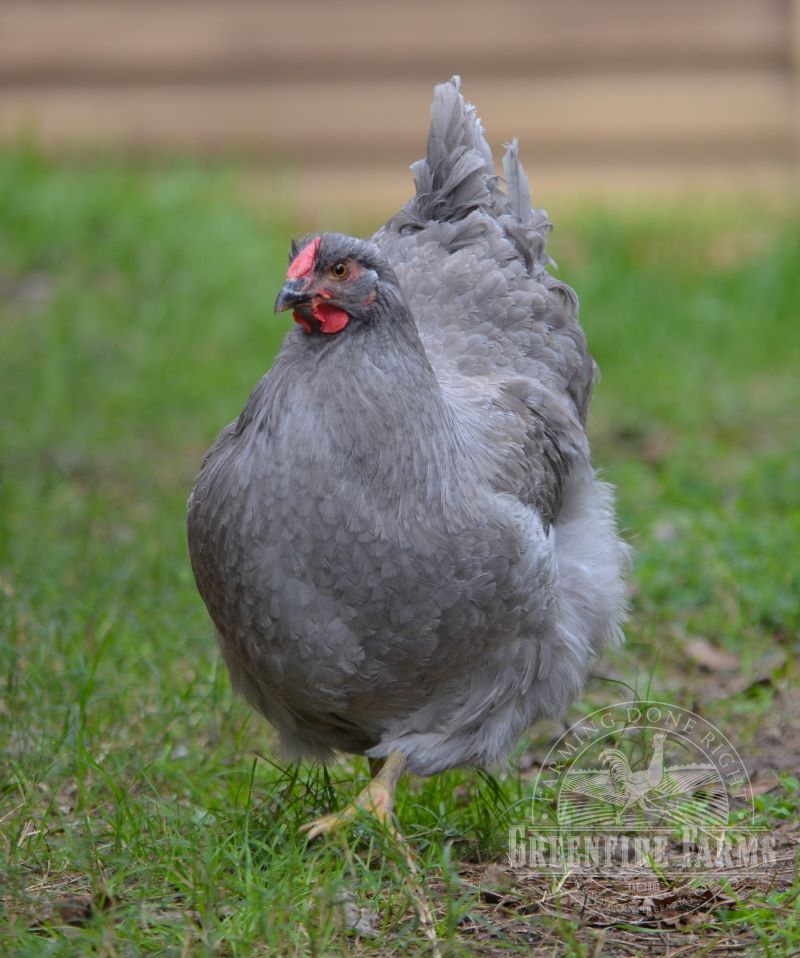

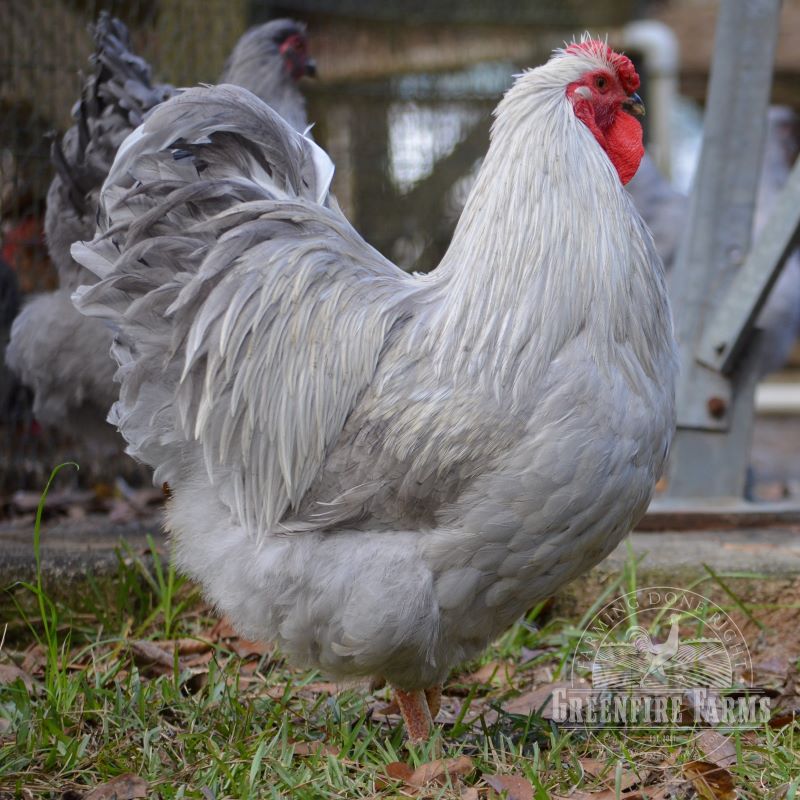
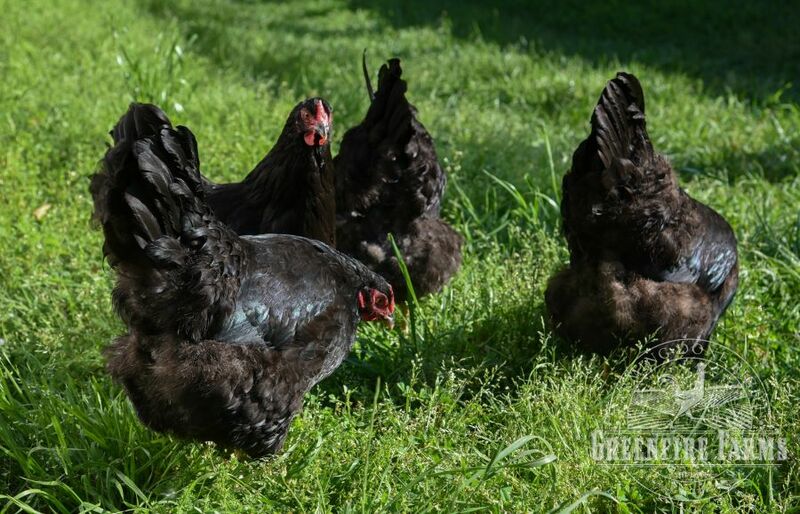
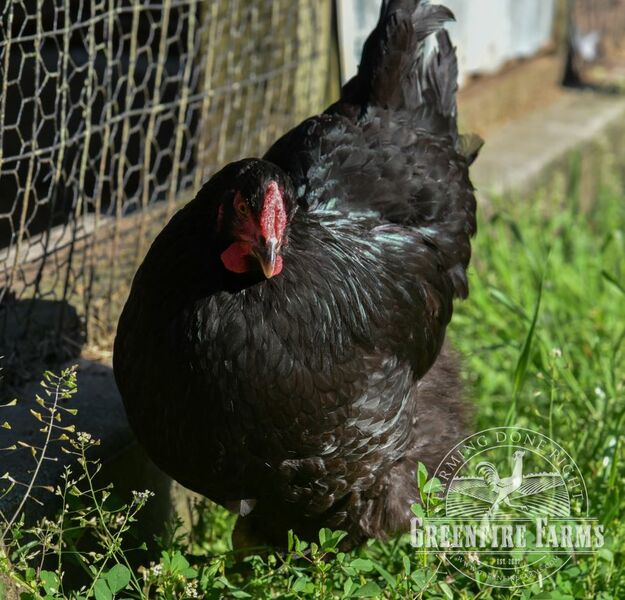

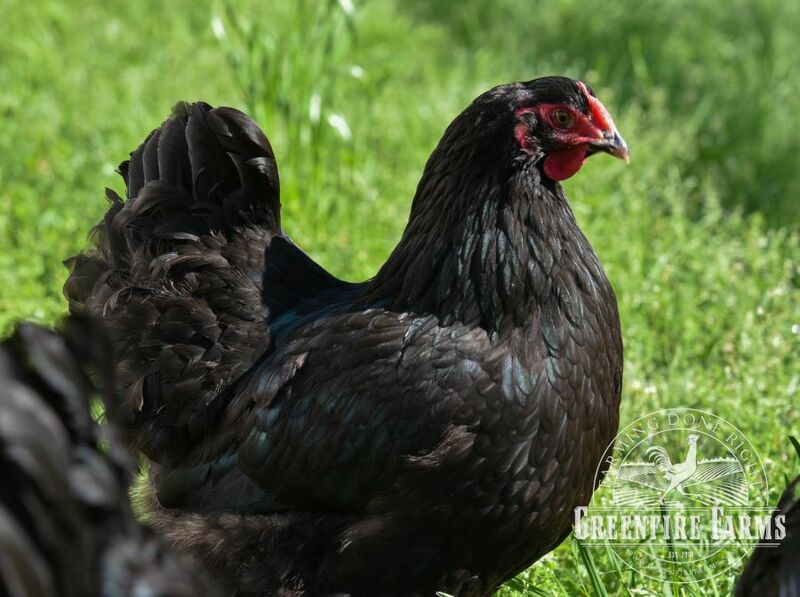
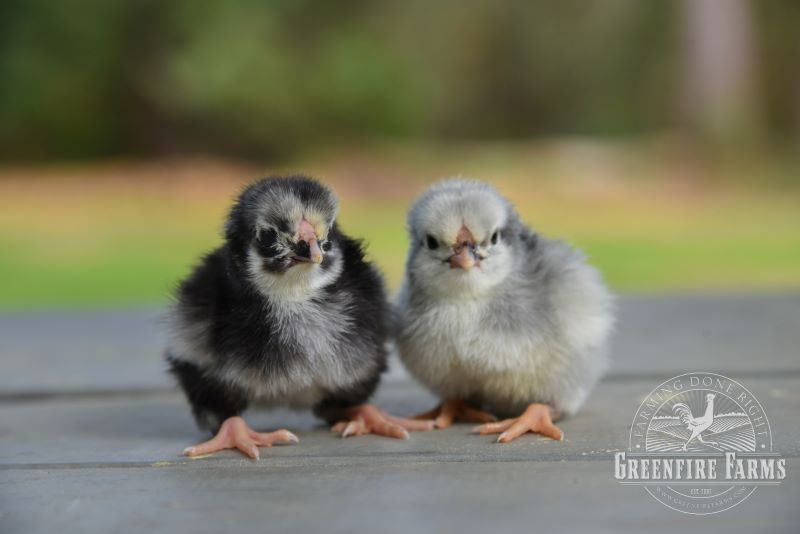
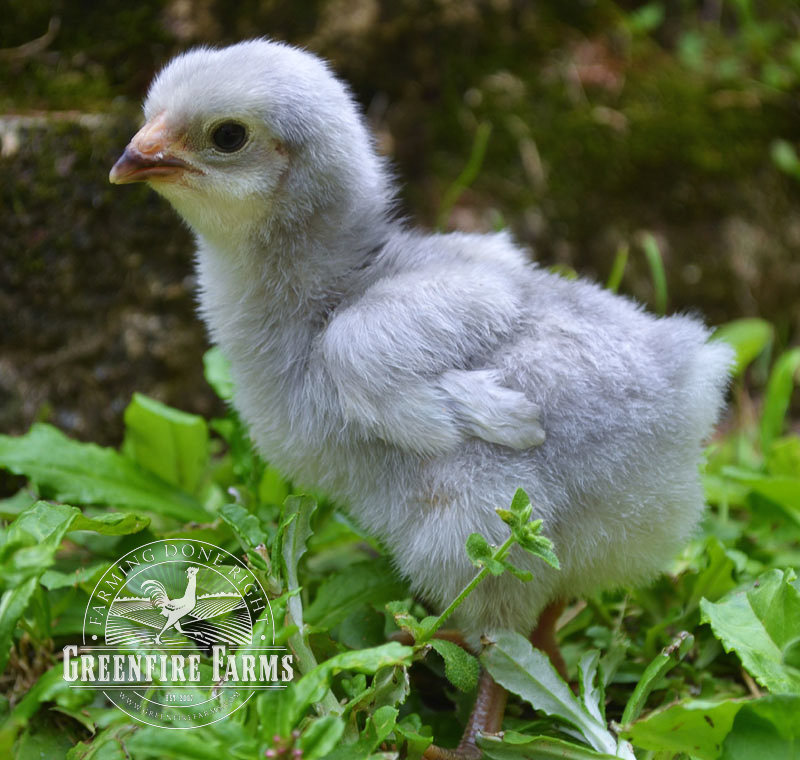
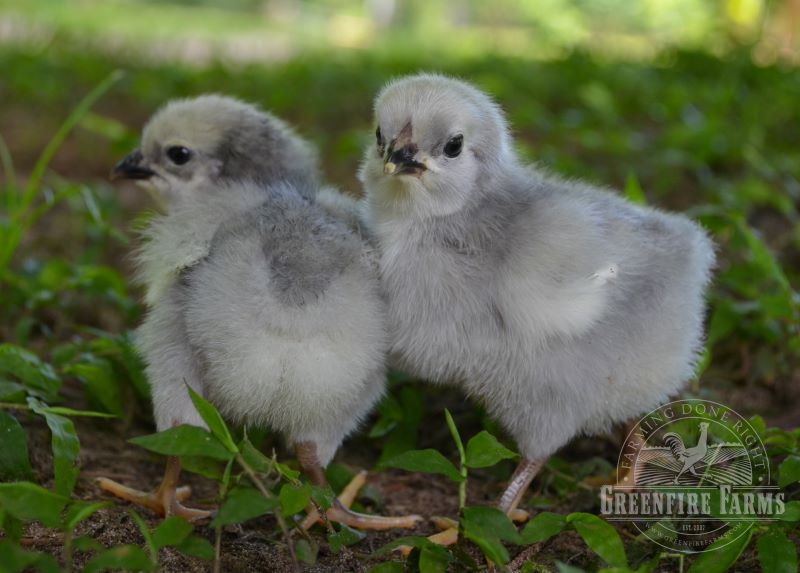
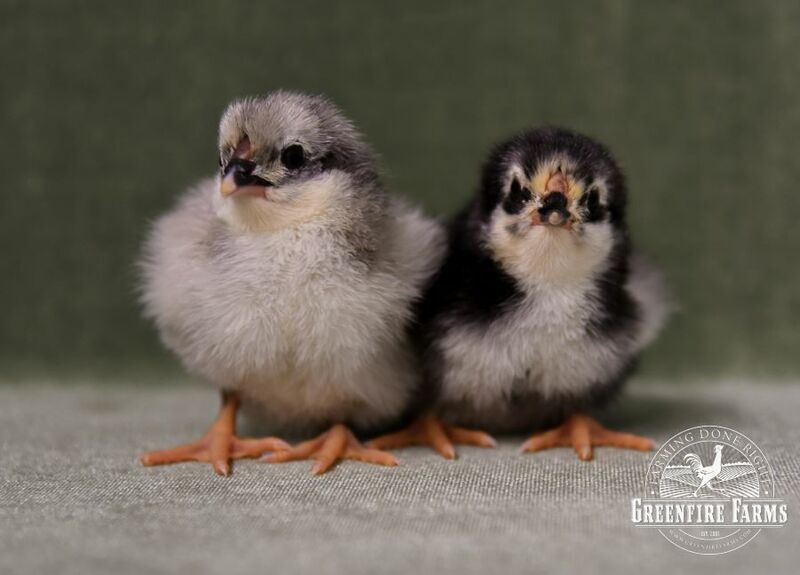
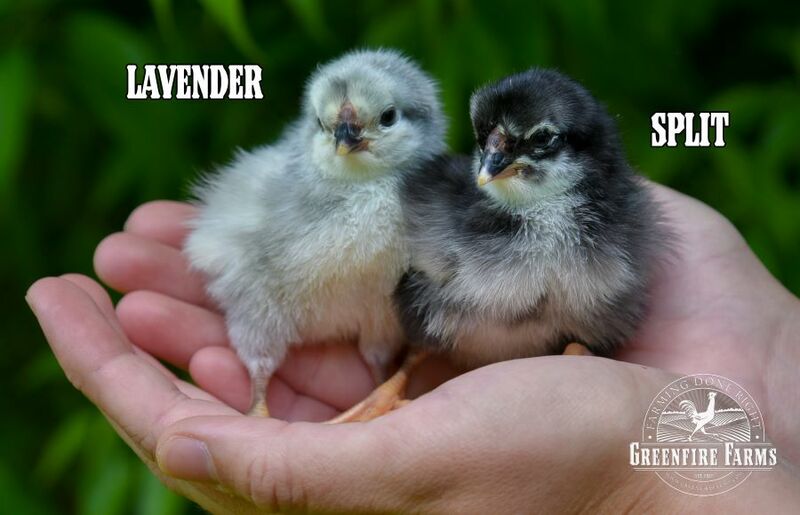
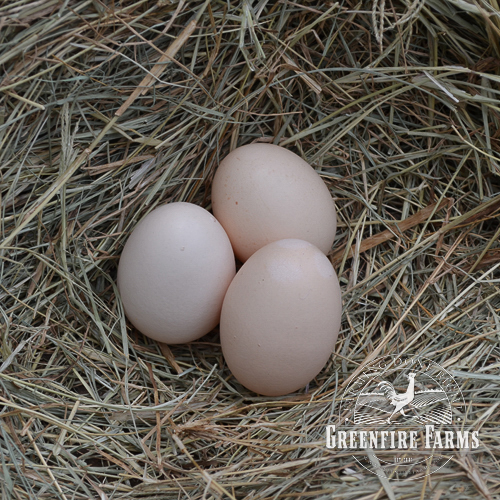

 Cart:
Cart: 

